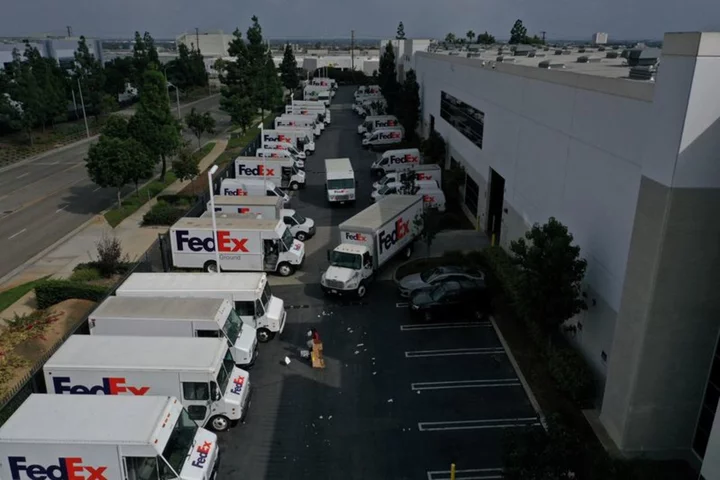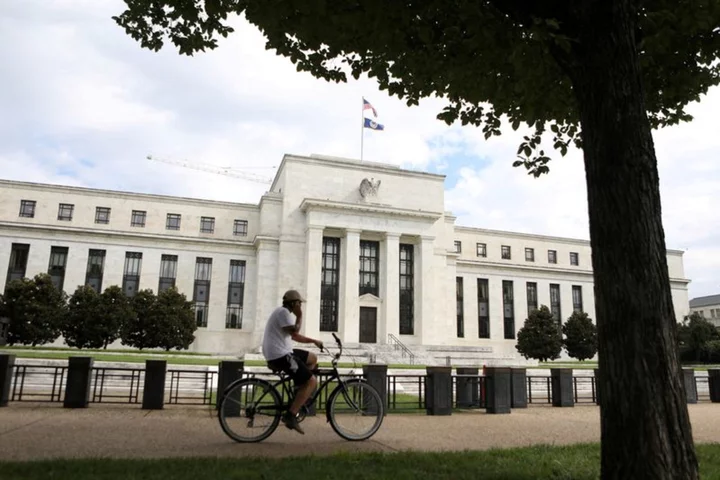By Lisa Baertlein
LOS ANGELES U.S. retailers and other delivery customers for the first time in more than four years are easily winning discounts from United Parcel Service and FedEx, according to industry data and interviews with seven professionals who advise shippers in price negotiations.
That's a sharp reversal from 2021 and the first half of 2022, when UPS and FedEx - awash with volume from the early pandemic's online shopping surge - rebuffed discount requests and cherry-picked the most profitable customers. Now, those same companies are fighting to fill trucks as demand shrinks.
Excluding the U.S. Postal Service (USPS) and Amazon.com, UPS and FedEx dominate the U.S. doorstep delivery sector with a share of almost 50% and combined annual revenue of $191 billion. They have pushed through annual general rate increases of more than 30% from 2019 to 2024, and are often nearly lock step on pricing. "They have to fight for every package right now, it's great for shippers," said LJM Consultants partner Kenneth Moyer, a former UPS pricing negotiator who now works with delivery customers.
That's because soft demand created an environment that is "very juicy" with opportunities for customers to squeeze out savings, said Deyman Doolittle, co-founder of data-driven consulting firm ShipSigma, which helps them cut shipping costs.
The consultants declined to identify their clients.
Rates for ground delivery services favored by online retailers dipped below 2022 levels during the second quarter and are forecast to be down for the entire third quarter, according to the TD Cowen/AFS Ground Parcel Freight Index. If that full-quarter drop materializes, it would be the first since the index started collecting year-over-year data in January 2019.
FedEx in a statement said it strategically manages rates with customers based on factors, including volume level, business segment and shipment type.
UPS in a statement said it is not using discounts as the sole way to win back business lost during its contentious Teamster contract talks this summer. The world's biggest parcel delivery firm added it is using price negotiations to encourage attractive high-margin or high-volume customers, while discouraging high-cost deliveries.
The new carrier stance has helped some online retailers reduce costs, which can then in turn lower prices for shoppers.
Department store Macy's and designer fashion leasing company Rent the Runway - both UPS customers - told Wall Street they were reaping savings thanks to recently negotiated delivery deals, including a 50 basis point reduction in the second quarter at Macy's. Both declined to comment for this story.
The swing in power dynamics has been unusually swift, said Moyer, who said his firm recently won savings worth $6.8 million for a UPS customer. Earlier this year that same customer saw a request for a $500,000 discount dismissed, Moyer added, without specifying the client.
While deals vary widely between customers, shippers generally are reaping savings of around 8%-12% from their previous agreements, said Mark Taylor, senior director of transportation consulting at Korber Supply Chain. Those discounts are similar to what companies saw pre-pandemic.
While those savings are far from offsetting years of price hikes, a return to past discount levels "feels like a windfall," said Taylor, a former FedEx Ground project manager.
THREE-DECADE MISMATCH
A yawning supply-demand mismatch is threatening to exacerbate carrier profit pressures.
UPS, FedEx, USPS and Amazon combined have capacity to deliver more than 110 million parcels per day while their customers are only sending about 70 million daily packages for delivery - the biggest imbalance in at least three decades, said Satish Jindel, president of delivery consultancy ShipMatrix.
Third quarter ground delivery rates are forecast to fall 0.55% per package versus a the year earlier period, according to the TD Cowen/AFS Ground Pacrel Freight Index.
While such a move may not be significant for small companies, it can result in meaningful savings for large customers, said Micheal McDonagh, president of parcel services at AFS Logistics.
Discounts also are increasing for air-based express package delivery rates, which are expected to decline 1.5% from the second quarter but rise 1.9% from a year ago, he added.
The demand downturn hit FedEx earlier and harder than at UPS, pricing advisers said, prompting it to begin discounting sooner and more aggressively than UPS.
But UPS was also shoring up business ahead of the July 31 expiration of its contract with about 340,000 workers represented by the International Brotherhood of Teamsters.
UPS added to the pressure with its fight to win back the 1.2 million packages per day that customers redirected to FedEx, USPS and regional rivals this summer ahead of a threatened Teamsters strike, pricing consultants said.
FedEx has said it can keep the roughly 400,000 packages per day it added during the UPS talks without lowering prices.
But experts are skeptical, particularly as UPS offers to cover early termination fees for customers that switched to FedEx.
"Due to UPS's aggressiveness, FedEx is not shy about doing what it takes to win business either," Jey Yokeley, vice president of sales for negotiating advisory firm TransImpact.
(This story has been corrected to change comparison for discounts to 'previous agreements' instead of 'list prices' in paragraph 13)
(Reporting by Lisa Baertlein in Los Angeles; Editing by Ben Klayman and Aurora Ellis)









